Thai musical instruments consists of strings, percussion and wind to create melodies and rhythms. Thai classical music band is divided into three types.
This ensemble is consisted of Saw and Jakhe (three-string harp-shaped alligator) as the main sound, and with other instruments like Thai flute (Khlui), Thai drums (Toan: one-sided drum and Ramana: flat-rounded drum) and mini cymbals(Ching).
Instruments used are mainly percussion with Thai wood wind instruments. The band mostly performs in special events from festive events to the funerals and in Thai performance like Khon (Thai masked performance), Thai puppet performance, Thai traditional dance, and Ta-lung (shadow play).
This ensemble is the combination of the string quartet and the Mahori orchestra. The ensemble is performed at a celebration or festive event.
Ra-nat is a set of woodens suspended by cords over a boat-shaped base and the surface is painted and varnish. The weights were attached under each piece of wood, creating a variety of scales. It was previously made of pieces of bamboo, now it is made of hard wood like rosewood (Ching-Chan).
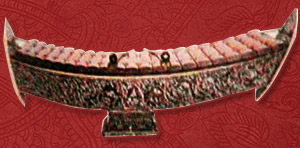
The shape is similar to a ship, consists of 21-22 pieces of wood. Each piece of wood creates different tone.
The ranat ek is played by two types of mallets. The hard mallets create the sharp bright sound when they keys are hit. The hard mallets are used for more faster playing. The soft mallets create a mellow and more softer tone which is used for slower songs.

Ranat Thum was adapted from Ranat Ek during early Rattanakosin around the time of Rama III.
The wooden pieces are larger in length and width but used the same material as Ranat Ek. Ranat Thum consist of 17-18 pieces hung over box-shape base. The sound from Ranat Thum is in lower tone like bass. So it is called as Ranat Thum ('Thum' means lower tone).
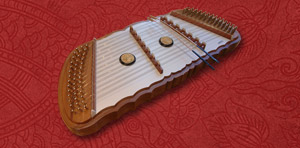
Khim is made of wood with brass strings laying across the instrument. Kim is played by striking the strings with flexible bamboo stick tipped with soft leather.
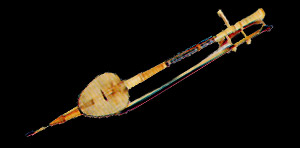
Saw Sam Sai is a traditional bowed string instrument. It is made from a special type of coconut covered on one end with animal skin, and it has three silk strings. Typically, the player glues a jewel onto the skin before playing, to reduce the skin's resonance.
The musician who plays Saw Sam Sai mostly sit at the front row of the ensemble. The instrument can be incorporated into the traditional orchestra with choir, or served as an accompaniment for singers.
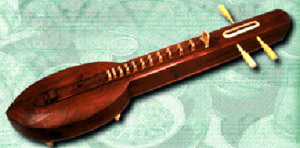
It is made of wood in a stylized alligator shape with three strings laying along the instruments. The two strings are made of silk yarn or nylon and the other string is made of brass. It has raised frets made of bamboo, which are affixed to the fretboard with wax or glue. The body is made of soft wood trees such as jackfruit.
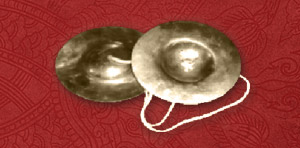
This was the type of metal percussion looks like mini cymbals made of an alloy. Ching comes in a pair of bowl shape cymbals. Chap is more flat and thinner.
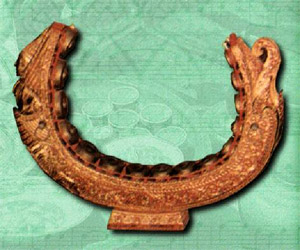
Khong Mon is a circle-shaped percussion instrument. The word 'Mon' in the name is from the Mon people, an ethnic group of Burma. The wooden frame of the Khong Mon extends into the air in the shape of a horseshoe.
Khong Mon is played in Pi Pat Mon ensemble.
